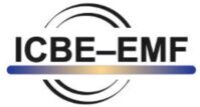Animal Studies Find Wireless Radiation Can Increase Cancer
Newly published letter concludes the WHO cell phone cancer review cannot offer safety assurances.
With the rapid expansion of wireless technology, concerns about its health effects, including cancer risks, continue to grow. A recently published critique highlights why relying solely on human epidemiology studies are not sufficient to address this pressing public health concern.
A Letter to the Editor “Exposure to radiofrequency electromagnetic fields and risk of cancer: Epidemiology is not enough!” published in Environment International by Agostino Di Ciaula, Maria Grazia Petronio, Fausto Bersani and Fiorella Belpoggi of the International Society of Doctors for Environment argues that a WHO funded systematic review by Karipidis et al. 2024 is insufficient for concluding cell phones and wireless technology is safe.
Although the WHO review seemed to offer cell phone safety assurances, even among long-term users, Di Ciaula et al. 2025 argues that the evidence supporting such safety conclusions is limited, because the human studies reviewed in the paper have selection biases, imprecise exposure assessments, and insufficient adjustment for confounding factors. Ignoring these issues could lead to an underestimation of the potential risks.
The Missing Piece: Experimental and Animal Studies
Di Ciaula et al. 2025 states that Karipidis et al.’s conclusions fail to incorporate findings from experimental and animal research. The International Agency for Research on Cancer (IARC) classified RF-EMF as “possibly carcinogenic to humans” (Group 2B) in 2011. Since then, several experimental animal studies, such as those by Falcioni et al. (2018), Lerchl et al. (2015), and the U.S. National Toxicology Program (2018) have strengthened the argument for a causal link between RF-EMF exposure and cancer. These carefully controlled animal studies all found associations between wireless exposure and increased cancers.

By focusing solely on human epidemiological data, the WHO study dismisses a broader scientific perspective that includes cancer associations and biological impacts demonstrated in controlled animal experiments. Di Ciaula et al. warns that relying on human case counts alone is a dangerous assumption, as it implies that we must wait for significant harm to manifest before taking precautionary and protective measures.
“Excluding the results of studies on animal carcinogenicity from the discussion on a health topic of primary social and regulatory relevance, as that of RF-EMF exposure, offers a very partial scenario and generates uncertainty. This approach reinforces the anti-ethical belief that epidemiological assessments simply based on the “count” of cancer cases in humans (even if approximate and conditioned by a number of possible confounders) would be a privileged way to demonstrate the carcinogenicity (or the lack of carcinogenicity) of widely diffused, potentially harmful environmental agents. This is an extremely dangerous assumption, as it is equivalent to accept that potentially detrimental effects can only be determined a posteriori, after the considered agent has had time to damage public health.”
Di Ciaula et al. emphasizes the need for a public health approach whereby wireless exposure is minimized, especially for children.
“Resorting to caution” in RF-EMF use—especially among vulnerable populations—should be a priority until stronger epidemiological evidence emerges. Future studies should integrate experimental findings and acknowledge the evolving nature of exposure when assessing potential health risks.
This newly published review echoes the critique published by the International Commission for the Biological Effects of Electromagnetic Fields (2025) and a critique by Hardell and Nilsson (2025) which also documented the inaccuracies and conflicts of interest in the WHO funded review.
Read the Letter to the Editor “Exposure to radiofrequency electromagnetic fields and risk of cancer: Epidemiology is not enough!” published in Environment International by Agostino Di Ciaula, Maria Grazia Petronio, Fausto Bersani and Fiorella Belpoggi.
Watch Fiorella Belpoggi PhD present on the Ramazzini Institute animal studies here.
